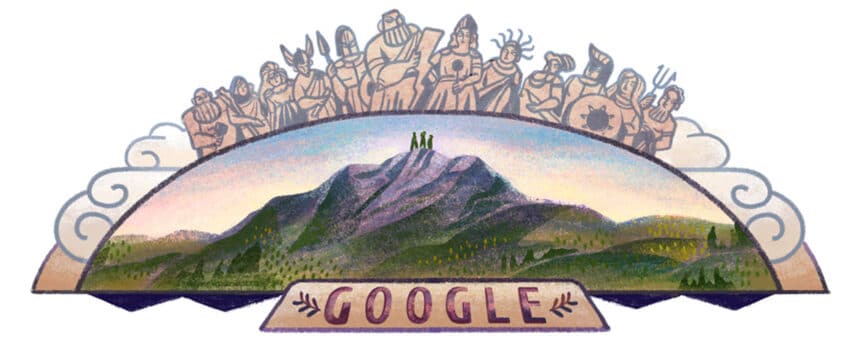On 2 August 1913, three courageous climbers answered “yes,” scaling this 9,573-foot summit sculpted with deep ravines and abrupt upgrades. Swiss photographer Frédéric Boissonnas, his friend Daniel Baud-Bovy, and Christos Kakkalos, a Greek hunter who served as their guide, set off in treacherous weather.
Kakkalos knew the mountain so well that he scaled its sharp inclines barefoot. The Swiss had some experience in mountaineering, but Boissonnas had to lug heavy photographic equipment up the mountain. He and his friend, Baud-Bovy, were tied together with a rope, standard procedure for such expeditions.
During their climb, the summit where Greek gods were said to reside was wreathed with storm clouds, and the climbers mistook a lesser peak for the home of the gods. Thinking their ascent was done, the elated adventurers wrote cards describing their feat and put the notes in a bottle that they buried on a crest they christened Victory Top. When the mist cleared, they spied another, more impressive peak, called Mytikas.
With Kakkalos in the lead, the men continued upward, scrambling across the slippery gorge. Boissonnas later wrote that he was compelled by the fire of Prometheus, who stole fire from Athena and Hephaestus’ workshop on Mount Olympus, gifting it to humans to help them in their labors.
Mythology
In Greek mythology, Mount Olympus is famously known as the dwelling place of the Twelve Olympian gods, who were the principal deities of the ancient Greek pantheon. According to mythology, Zeus, the king of the gods, resided at the summit of Mount Olympus, where he held court with the other gods and goddesses. It was believed that the gods could observe and influence the affairs of mortals from their celestial abode.
Geography
Mount Olympus is the highest mountain in Greece and the second-highest in the Balkans. Its highest peak, Mytikas, reaches an elevation of about 2,918 meters (9,573 feet). The mountain is part of the Olympus Range, which extends along the border between Thessaly and Macedonia in northern Greece. The region around Mount Olympus is characterized by its natural beauty, with lush forests, diverse flora and fauna, and numerous hiking trails.
Cultural Significance
Mount Olympus has played a central role in Greek culture and history. It has been a source of inspiration for poets, writers, and artists throughout the ages. The mountain’s majestic presence has been captured in numerous works of literature, paintings, and other forms of artistic expression.
Olympic Games
The name “Olympus” is also associated with the Olympic Games, which were originally held in Olympia, a sacred site in ancient Greece. The Olympics were dedicated to Zeus and were intended as a celebration of athletic and physical prowess. The term “Olympic” derives from the name of Mount Olympus, further highlighting the mountain’s cultural significance.
Hiking and Tourism
Mount Olympus is a popular destination for hikers, climbers, and outdoor enthusiasts. The mountain offers a range of trails catering to different skill levels, and reaching the summit of Mytikas is a challenging yet rewarding endeavor. The area’s natural beauty, unique ecosystems, and historical connections draw tourists from around the world.
In summary, Mount Olympus holds a multifaceted significance as a mythological dwelling place of the gods, a majestic natural landmark, a source of cultural inspiration, and a symbol of athletic competition. Its historical, cultural, and geographical importance continues to resonate with people, making it a cherished and iconic location in Greece and beyond.

